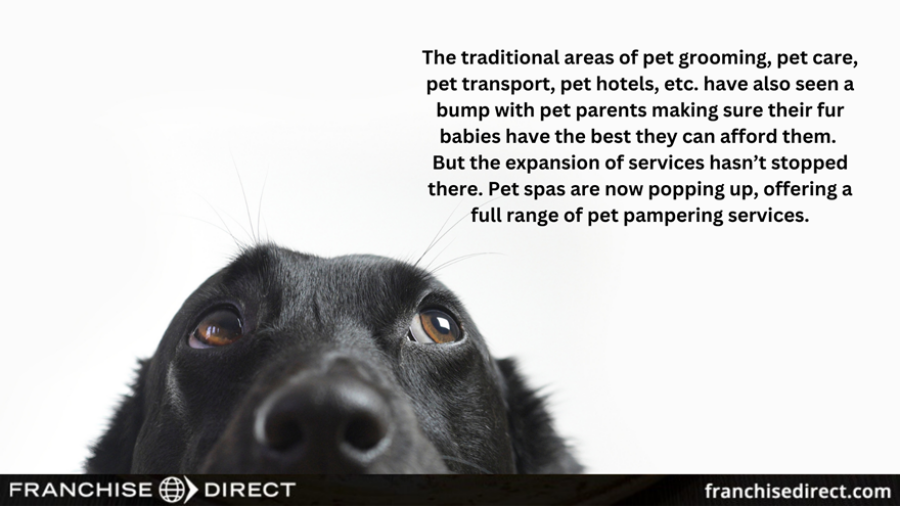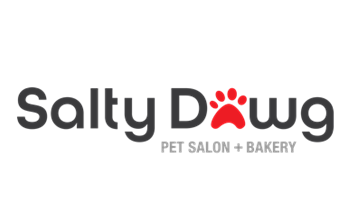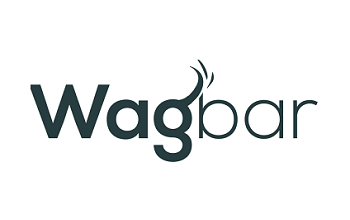🕒Estimated Reading Time: ~9 minutes

Size of the Pet Market in the United States and Employment Outlook
People LOVE their pets—and they’re spending the money to prove it.
Thirty years ago (1994), the amount of total pet industry spending in the United States only totaled $17 billion. Now, the total is over eight times that amount and climbing. In 2022, the total amount of expenditures on pets in the United States was $136.8 billion, up from $123.6 billion in 2021 and $90.5 billion five years prior in 2018.
Here’s a breakdown from the American Pet Products Association (APPA) of how that nearly $137 billion was spent:
| Category | Amount | Percentage of Total |
| Pet Food & Treats | $58.1 billion | 42.5% |
| Vet Care & Product Sales | $35.9 billion | 26.2% |
| Supplies, Live Animals & OTC Medicine | $31.5 billion | 23.0% |
| Other Services* | $11.4 billion | 8.3% |
(*The other services category is defined by the APPA as boarding, grooming, insurance, training, pet sitting and walking and all services outside of veterinary care.)
With all the sales and revenue growth, you’re probably wondering just how large the pet market is?
According to the APPA survey, 66% (or just below 87 million) of the households in the U.S. own a pet. Dogs remain the most popular house pet, followed by cats, and freshwater fish.
| Pet | Number of U.S. Households |
| Bird | 6.1 million |
| Cat | 46.5 million |
| Dog | 65.1 million |
| Horse | 2.2 million |
| Freshwater Fish | 11.1 million |
| Saltwater Fish | 2.2 million |
| Reptile | 6.0 million |
| Small Animal | 6.7 million |
As for employment, the U.S. Bureau of Labor Statistics says that prospects in the animal care and service workers sector is promising. The Department of Labor projects growth of 16% in the field from 2022 to 2032, “much faster than the average for all occupations.”
Rise of “Pet Parents” Causing a Boom in the Pet Industry
A development at the heart of the pet franchise industry explosion: Americans are by-and-large holding off marriage until later in life.
According to researchers, those who are delaying marriage and childrearing until later in life are more likely than average to own a pet in a trial run for parenting – if they want to become parents at all. “That’s how millennials are approaching pet ownership,” says Nathan Richter, an analyst with Wakefield Research. The change is so pervasive that it’s made its way into our everyday language, evidenced by the increase in the use of the phrases “pet parents” and “fur babies” vs. the traditional phrase of “pet owners.”
Though a recent development, this phenomenon has been centuries in the making. As Helaine Olen once wrote in a column for Slate: “It helps to think of our pet-as-child obsession as a slow, 200-year upgrade in the status of the animals of our lives. The growing urban middle class of Victorian times, separating into nuclear families as they gained distance from rural life, slowly ceased viewing dogs primarily as working animals and began to, instead, see them as beloved companions.”
Another term for this phenomenon: anthropomorphism.
Anthropomorphism is the scientific term for giving animals more human characteristics. This increased humanization of pets, particularly dogs and cats, has provided a foundation for growth within the pet industry in nearly every direction, some not previously imagined.
As Tony McReynolds of the American Animal Hospital Association (AAHA) once said, “So what does the future hold for your pets? Whatever it holds for you, apparently.” Below are just a few ways the humanization of pets has expanded some pet industry categories.
Pet Accessories Go Glitzy and High-Tech
Take the accessories market, for instance. It’s not enough anymore for most owners to give their pet a nice collar and be done. “In the past seven years, I started to notice the humanization of pets and that pet owners were seeking higher quality goods and more expensive, high-end accessories,” as Ashley Harris, owner of Bark Fifth Avenue, told Pet Age in 2019.
Beyond higher quality materials and more stylish fare, pet tech is steadily the pet accessory market. Accessories in this area have had a dramatic effect on the safety of people’s beloved pets. From GPS trackers to remotely controlled feeders to smart cameras, innovations in pet-driven technology have given millions of pet parents peace of mind about their fur babies no matter how near or far away they are from each other.
In addition to tracking and safety, pet tech makers are imagining a future in which pets can use wearables like humans to improve their health. An emerging subset of pet wearables allow pet owners to collect information on a pet’s activity level and diet. This information gathered can lead to better care choices for pet parents and veterinarians, including proactively monitoring and treating pets before issues escalate.
Pet Food Now Rivals Human Food Quality
The uptick in “fresh,” “healthy,” “holistic,” and/or “gourmet” dog and cat food options in the past number of years closely mirrors food trends in human diets. That’s no coincidence.
“We know that pet parents are looking for the highest-quality, nutritious food they can find for their pet, but they also are attracted to the recipes that appeal to their own dietary preferences and taste buds,” said Jillian Smith, director of communications at Merrick, a leading pet food supplier. “When it comes to our recipe names, we take cues from well-known human foods because they’re relatable to the pet parent.”
And it’s not just for dogs and cats, the evolution of pet food is making its way to other pets as well. According to Pet Age, pet parents of smaller animals and birds also are seeing an increase in options that are similar to human food products and made with “human-grade ingredients.”
Pet Services Now Focused on Holistic Well-Being Along with Utility

While pet accessories and food have been areas of dramatic expansion within the pet industry, so have pet services—particularly in the field of “alternative therapies.”
As you can imagine, the traditional areas of pet grooming, pet care, pet transport, pet hotels, etc. have also seen a bump with pet parents making sure their fur babies have the best they can afford them.
For instance, Hounds Town USA goes beyond the typical doggie daycare business model. The company strives to be a place that “optimizes their physical and psychological health and provides the natural structure dogs are unlikely to receive in the home environment.”
But the expansion of services hasn’t stopped there. Pet spas are now popping up, offering a full range of pet pampering services. Pet spa services can include massage therapy, aromatherapy, facials, and more.
In addition, “alternative” services for pets are poised to expand further in coming years. The alternative therapies pet parents are most likely to treat their pet with, according a survey done by non-profit organization the Michelson Found Animals Foundation, are aromatherapy (with 81% of the respondents saying yes to consideration), reflexology (70%), and naturopathy (73%). (Note: naturopathy is the belief that diseases can be prevented or treated without drugs.)
This expansion also extends to product development. Hemp and CBD are becoming big in the pet care field. CBD and hemp products for pets are—like for humans—made to relieve aches, pains, and inflammation. In addition, CBD is often used to address issues related to anxiety and stress in pets. These products come in various forms, such as oils, treats, or chews.
Buying a Pet Franchise
There is nothing more rewarding than to see the positive impact you and your business have had on the relationship between customers and their pet companions, and the impact in your community.
According to the founders of Wag N’ Wash, the ideal franchise candidate for pet franchise “is a community minded, pet-centric individual who is outgoing, has a fun and friendly personality, loves working directly with customers and leading a team, is able to follow a proven system, has excellent communication skills, and understands the special bond that exists between companion pets and their human guardians.”
And beyond the soft skills needed, there is the matter of the finances…
Initial and Opening Franchise Costs
Our franchise profiles will present you with a basic range for the initial investment or minimum cash required to open a franchise. But when it comes to finding out the details of an initial investment, the Franchise Disclosure Document (FDD) is the best place to look. Franchisors offer estimates on the opening costs in their Franchise Disclosure Document (FDD) based upon their experience establishing, and in some cases operating, units.
However, prospective franchisees should keep in mind these estimates are just that—an estimate. Prospective franchisees should review the figures presented with a business advisor, taking into consideration their unique circumstances, before making the decision to enter into a franchise agreement.
Ongoing Franchise Fees
Throughout the length of the agreement there are costs for being a part of the franchisor’s business system. These costs include items such as royalty fees, charges for technical support, and continued marketing costs.
The most common is the royalty fee. Royalty fees are assessed for the continued use of the franchisor’s trademarks and patented processes, along with certain types of operational support.
In addition to regularly assessed fees, other fees are charged on an “as needed” basis such as audit fees, or costs for additional, non-mandatory, training. Prior to investing, prospective franchisees should do their research and carefully review a franchisor’s FDD for more detailed information on all systems, procedures, and costs.
Reminder: Check the Animal-Specific Regulations in Your Area
Check your local regulations for animal-specific ordinances that could affect your ability to open your desired franchise in certain areas around where you live. For instance, many locales require conditional use permits to lodge animals overnight in a place of business. This kind of regulation is especially important to not just boarding franchises, but also franchises that offer grooming as well as pet daycares.
--
For more information on a number of franchises that help people care for their furry (and not-so-furry) friends, please see our pet franchise profiles.
Hottest Pet Franchises

Zoomin Groomin
Sniffing around for a great new opportunity? Zoomin Groomin is expanding our Mobile Pet Grooming business nationwide. Set your own schedule, be your own boss and work with pets all day. We’ll be right by your side, every step of the way. Woof!

Salty Dawg Pet Salon
Whether you have considered other career paths or just absolutely love dogs. Salty Dawg Pet Salon and Bakery is the new franchise opportunity to join in an industry that we know best.

Wagbar
Wagbar seamlessly blends the concepts of an off-leash dog park and a bar, offering a unique social experience for dogs, their owners, and anyone seeking a canine-friendly environment. Request more info HERE!














